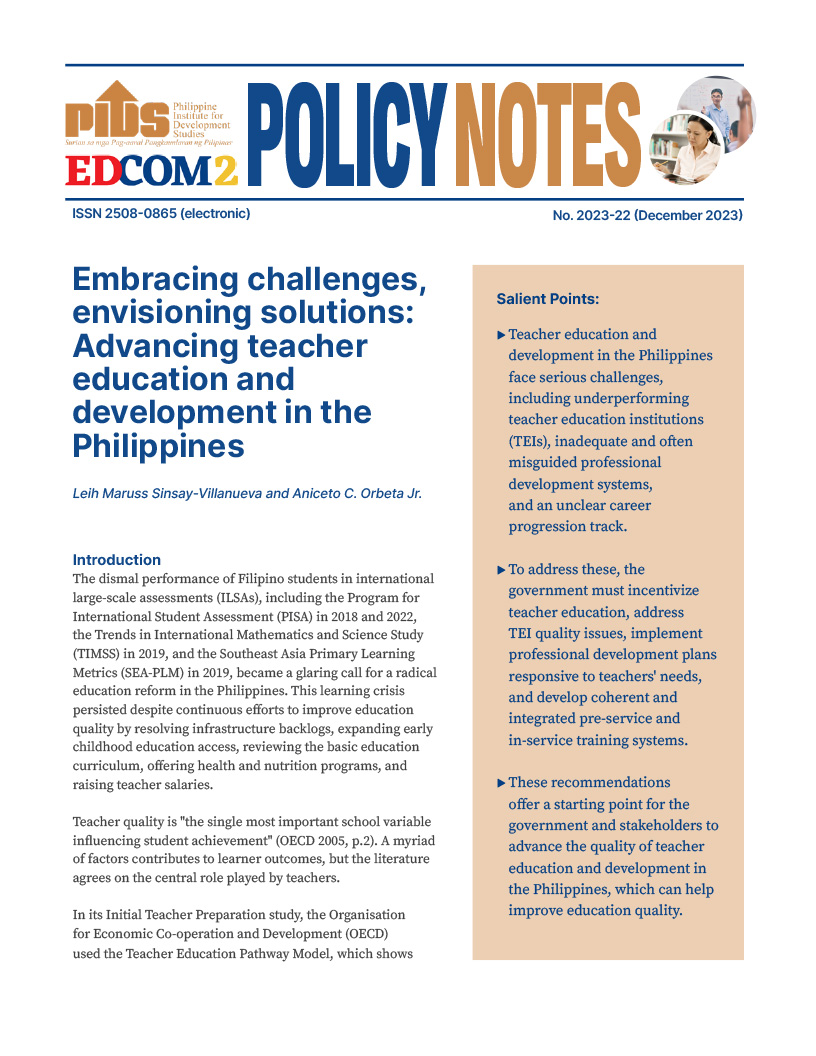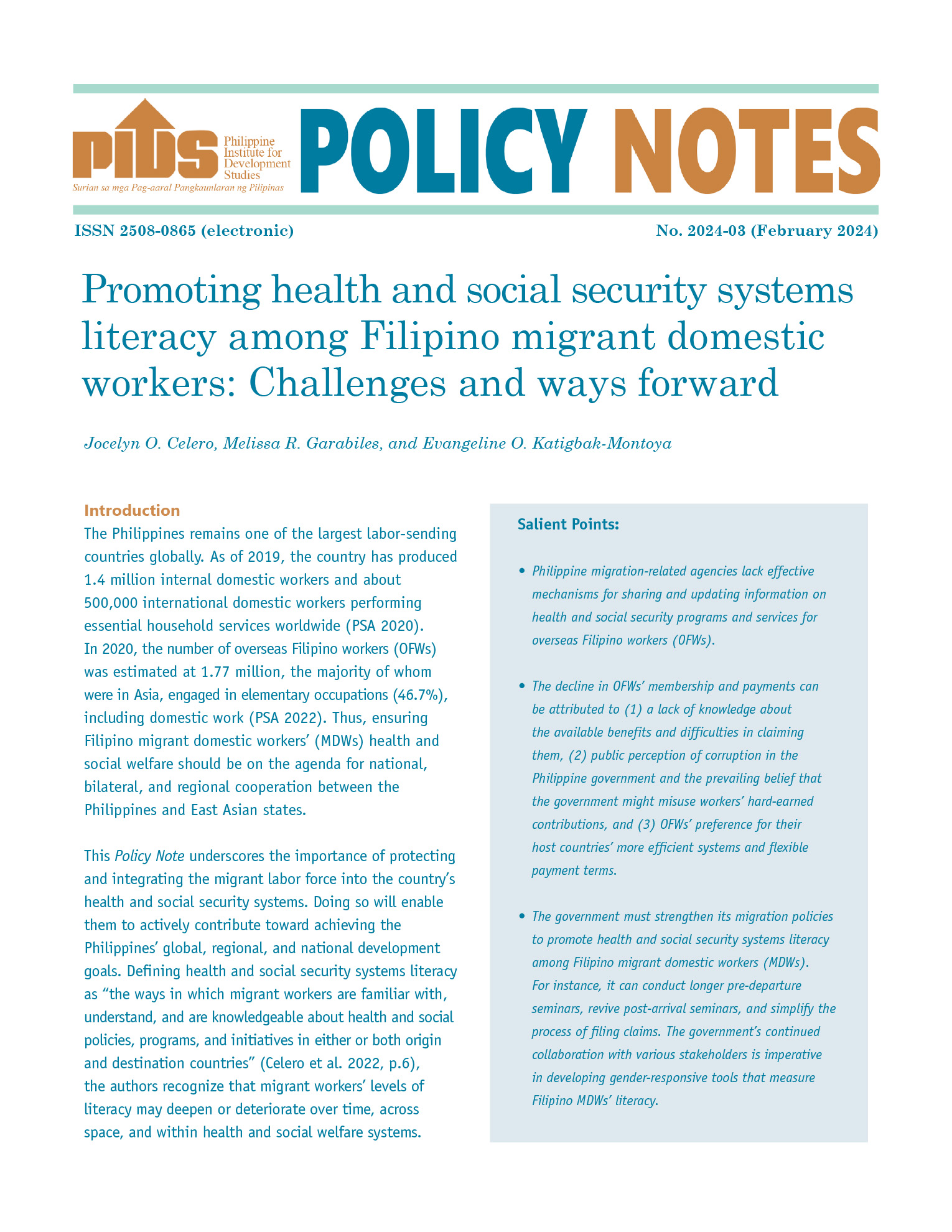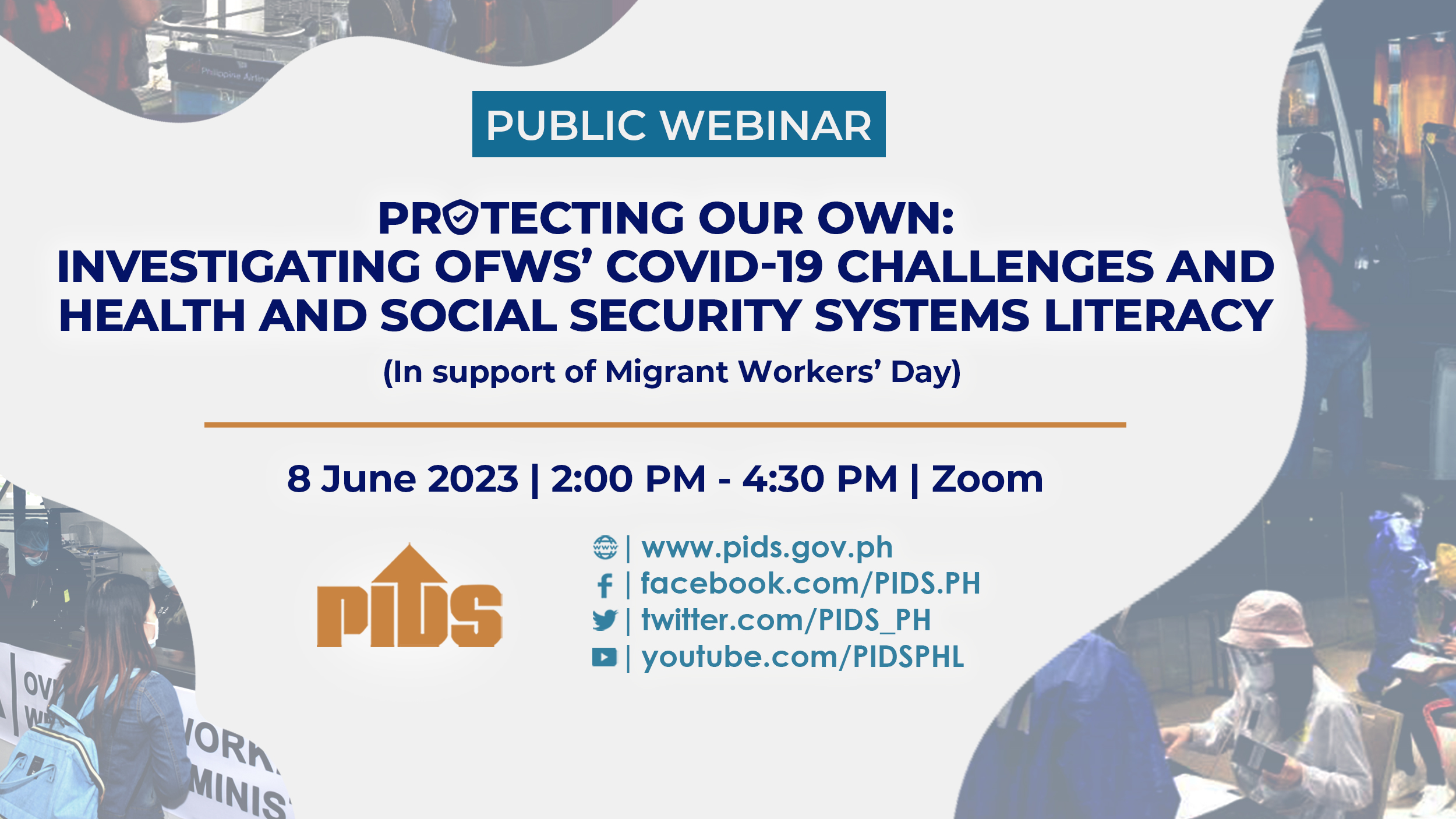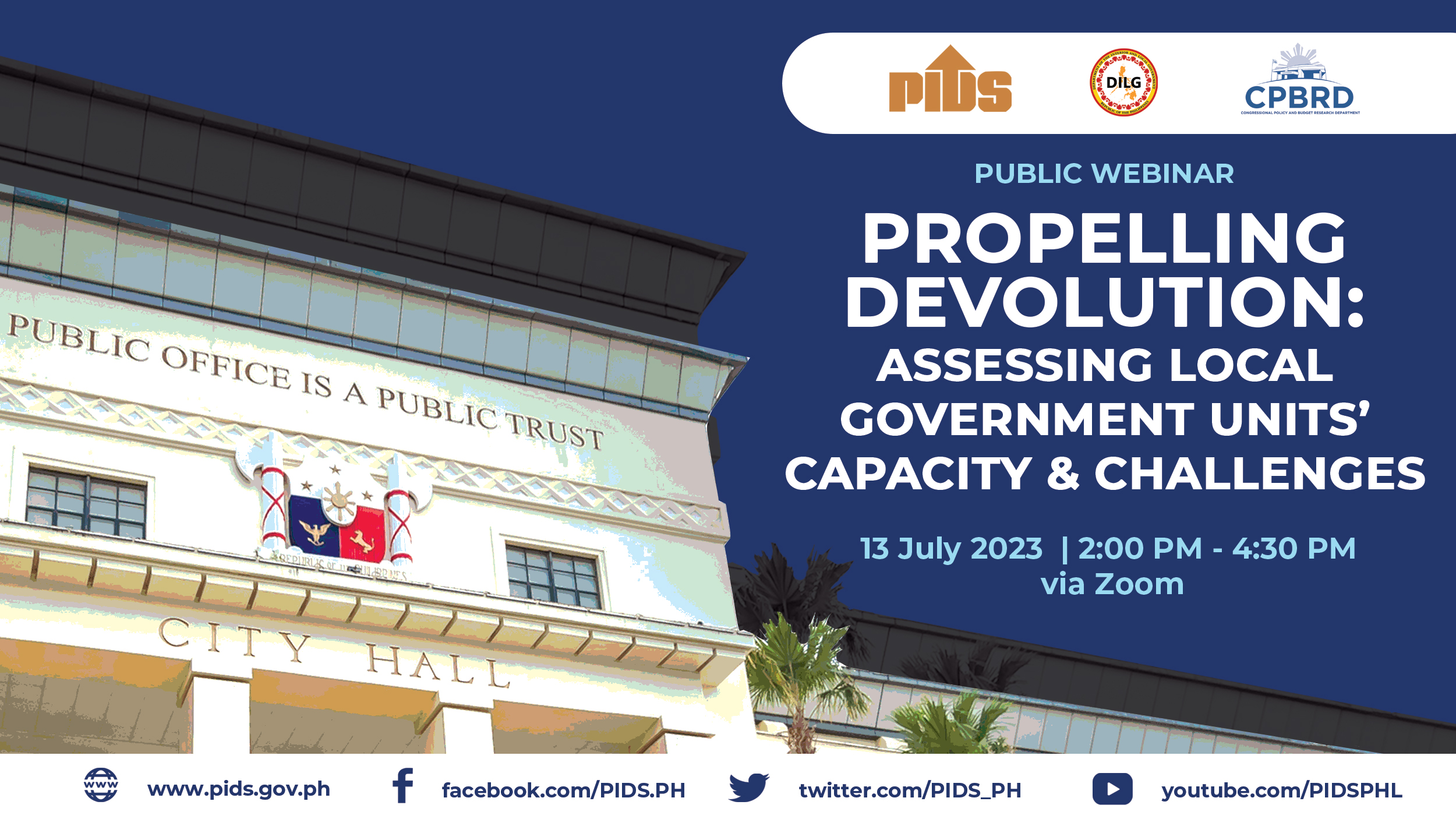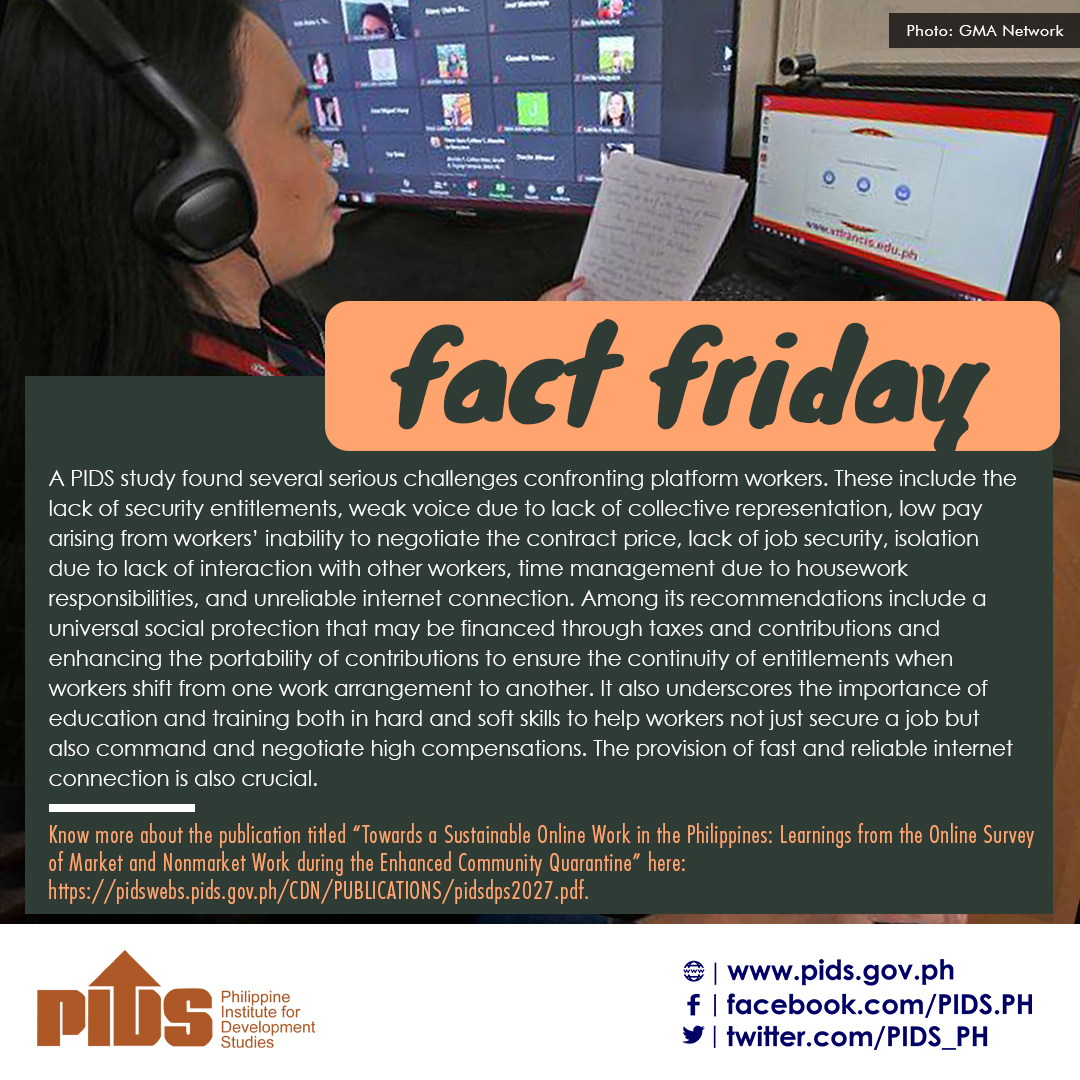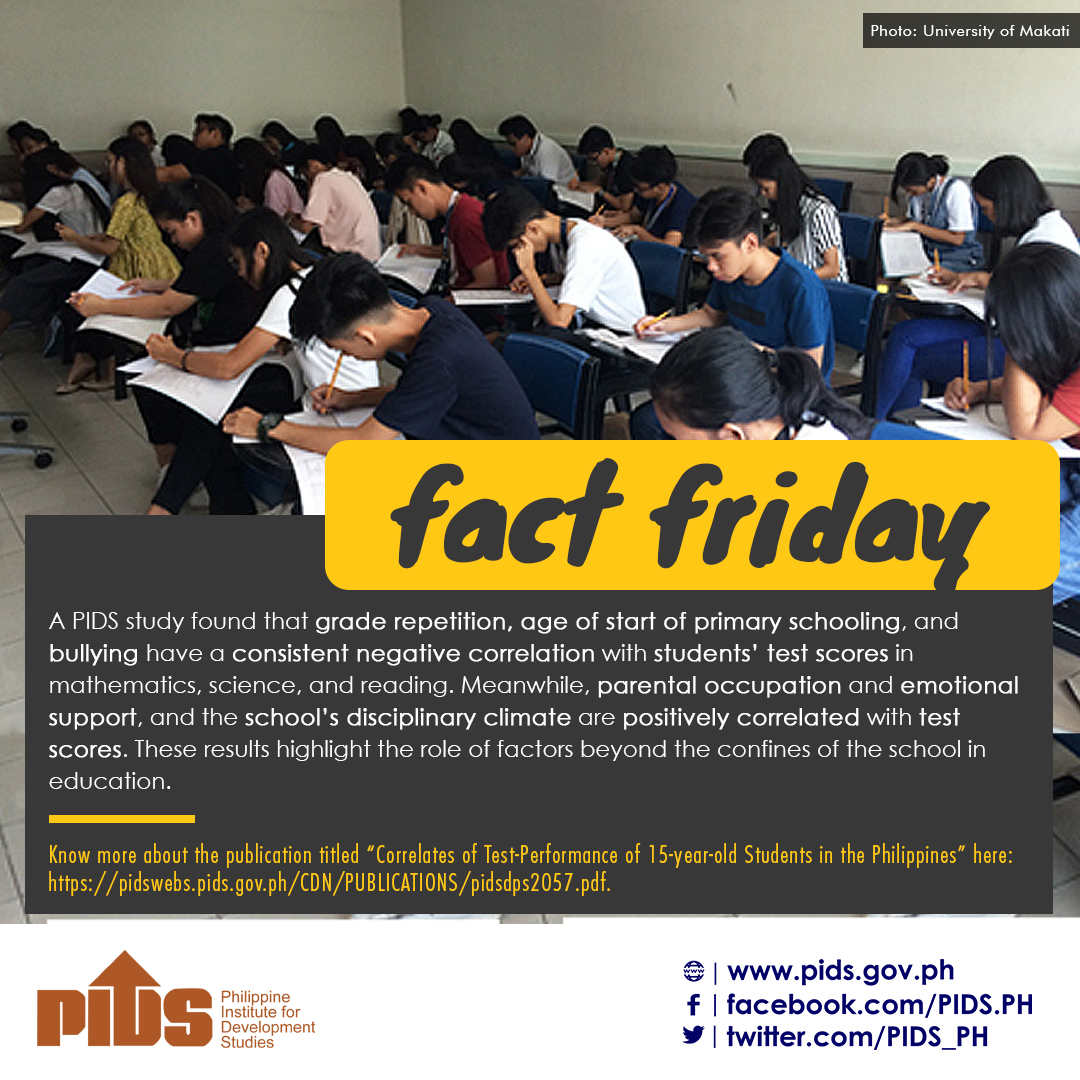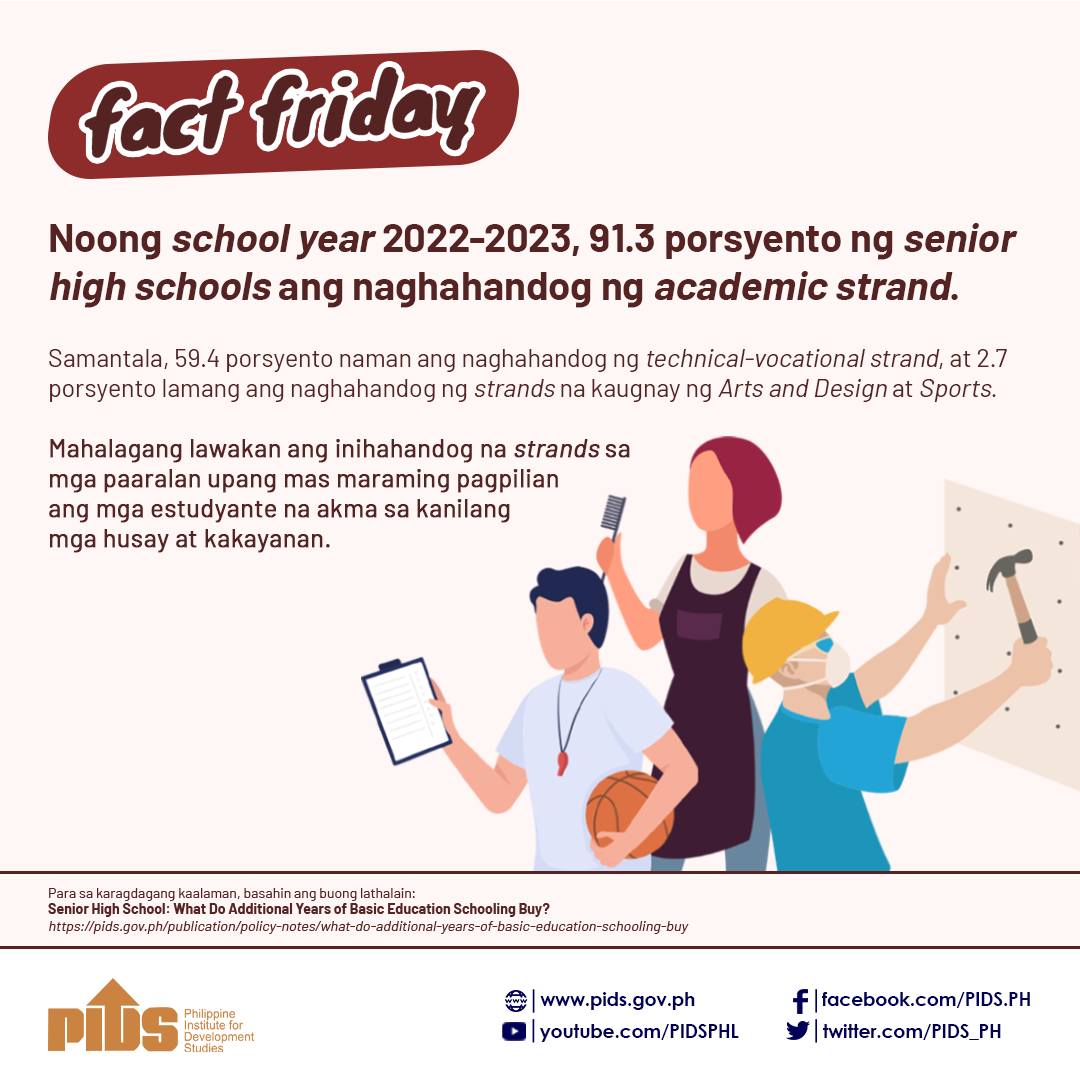A CONSULTANT BY state think tank Philippine Institute for Development Studies reveals that some senior high school (SHS) students face challenges writing in English.
Karen Brillantes shared this during the Public Seminar on Reforms in the Philippine Education Sector held at PIDS recently.
Brillantes said this is particularly evident in research subjects, where students are required to produce research papers to pass a course.
“How do you make them write a research paper if they do not even have the basics?” she asked.
She revealed the students often end up submitting projects for mere compliance only, preventing them from maximizing the learning they should have been getting from SHS education.
One possible reason behind this concern is the design and content of the current SHS curricula, which she described as “too ambitious” and primarily designed for advanced learners in the urban setting, such as science high schools in Metro Manila.
As such, many SHS students are unprepared for the materials they are assigned to study. This leads to another layer of problems, such as the difficulty in contextualizing activities further worsened by lack of resources.
For instance, while SHS curricula have computer literacy subjects, not all junior high schools have computers, which make it difficult for these students to adjust to the SHS level of discussion.
Hence, many of them experience “culture shock” upon entering SHS. SHS teachers also face difficulties in delivering the curricula due to insufficient guidelines, inadequate materials, and preparation.
Sadly, their students are the ones bearing the brunt of the implementing agency’s lack of preparation.
In fact, SHS students are now decrying the “too much” reporting, which made them feel they teach more than their teachers do.
SPORTS, ARTS PROGRAMS NEED ATTENTION, TOO
Brillantes saw that balancing between academics and sports or arts classes may address the difficulty faced by SHS students in adjusting to the SHS level of education.
After all, she said the latter programs require hands-on experiences.
“On top of their regular academic programs, the athletes, for instance, still need to join different activities, such as sports competitions, to expose them to opportunities outside SHS,” she added.
Unfortunately, students who chose the sports and arts tracks have already developed sentiments that their teachers and other students look down on them.
“They feel that people think they are not smart enough because they are in the sports or arts track,” the PIDS researcher revealed
She said here is where the role of the Department of Education (DepEd) should come in.
“DepEd should help them understand why there has to be different SHS tracks, as it is currently unclear to both the students and the teachers, leading to bias against those pursuing sports and arts tracks,” she added.
To date, sports and arts tracks are the least offered tracks under the SHS program of DepEd.
Brillantes revealed that at least 98 percent of SHS institutions, including public and private high schools, as well as state universities and colleges, do not offer the sports and arts tracks.
In real numbers, this figure translates to no less than 10,883 out of the total 11,087 SHS institutions that fail to offer either sports or arts track.
In terms of region, CALABARZON has the largest number of SHS institutions not offering the said tracks, followed by Central Luzon and Central Visayas regions.
CALABARZON covers the provinces of Cavite, Laguna, Batangas, Rizal, and Quezon.
The situation of these tracks is in direct contrast to the number of schools offering other tracks, such as the academic track, which is being offered by 85 percent of SHS institutions.
Meanwhile, 62 percent of SHS institutions offer the technical-vocationallivelihood tracks.
“Many students fail to enter the strands they like simply because of the unavailability of tracks at provincial and regional levels,” Brillantes claimed.
Apparently, “the choice should be aligned with the interest of the student given that the SHS program was supposed to put premium in the student’s choice,” she added.
‘MERE BIRTHING PAINS’
The problem faced by the SHS program, however, goes beyond the lack of preparedness on the part of the students.
To date, Brillantes revealed that there are still inadequacies in program inputs, such as human and learning resources, school buildings, facilities, tools, and equipment
“DepEd’s human resources, especially teachers, have been its biggest asset in the implementation of SHS, hence they should be better equipped and supported in delivering the curriculum,” she said.
Brillantes also called for improved coordination between DepEd and other agencies, such as the Commission on Higher Education and the Technical Education and Skills Development Authority, to iron out policies related to SHS and to address stakeholders’ confusion with these policies.
The PIDS researcher, however, asserted these challenges as “mere birthing pains,” which, she said, are usual in the implementation of new public programs.
“Certainly, the SHS program is facing many challenges, which hopefully are mostly mere birthing pains that can be addressed as soon as implementation procedures continue to stabilize and take root,” she concluded. (RGV/PIDS)
Karen Brillantes shared this during the Public Seminar on Reforms in the Philippine Education Sector held at PIDS recently.
Brillantes said this is particularly evident in research subjects, where students are required to produce research papers to pass a course.
“How do you make them write a research paper if they do not even have the basics?” she asked.
She revealed the students often end up submitting projects for mere compliance only, preventing them from maximizing the learning they should have been getting from SHS education.
One possible reason behind this concern is the design and content of the current SHS curricula, which she described as “too ambitious” and primarily designed for advanced learners in the urban setting, such as science high schools in Metro Manila.
As such, many SHS students are unprepared for the materials they are assigned to study. This leads to another layer of problems, such as the difficulty in contextualizing activities further worsened by lack of resources.
For instance, while SHS curricula have computer literacy subjects, not all junior high schools have computers, which make it difficult for these students to adjust to the SHS level of discussion.
Hence, many of them experience “culture shock” upon entering SHS. SHS teachers also face difficulties in delivering the curricula due to insufficient guidelines, inadequate materials, and preparation.
Sadly, their students are the ones bearing the brunt of the implementing agency’s lack of preparation.
In fact, SHS students are now decrying the “too much” reporting, which made them feel they teach more than their teachers do.
SPORTS, ARTS PROGRAMS NEED ATTENTION, TOO
Brillantes saw that balancing between academics and sports or arts classes may address the difficulty faced by SHS students in adjusting to the SHS level of education.
After all, she said the latter programs require hands-on experiences.
“On top of their regular academic programs, the athletes, for instance, still need to join different activities, such as sports competitions, to expose them to opportunities outside SHS,” she added.
Unfortunately, students who chose the sports and arts tracks have already developed sentiments that their teachers and other students look down on them.
“They feel that people think they are not smart enough because they are in the sports or arts track,” the PIDS researcher revealed
She said here is where the role of the Department of Education (DepEd) should come in.
“DepEd should help them understand why there has to be different SHS tracks, as it is currently unclear to both the students and the teachers, leading to bias against those pursuing sports and arts tracks,” she added.
To date, sports and arts tracks are the least offered tracks under the SHS program of DepEd.
Brillantes revealed that at least 98 percent of SHS institutions, including public and private high schools, as well as state universities and colleges, do not offer the sports and arts tracks.
In real numbers, this figure translates to no less than 10,883 out of the total 11,087 SHS institutions that fail to offer either sports or arts track.
In terms of region, CALABARZON has the largest number of SHS institutions not offering the said tracks, followed by Central Luzon and Central Visayas regions.
CALABARZON covers the provinces of Cavite, Laguna, Batangas, Rizal, and Quezon.
The situation of these tracks is in direct contrast to the number of schools offering other tracks, such as the academic track, which is being offered by 85 percent of SHS institutions.
Meanwhile, 62 percent of SHS institutions offer the technical-vocationallivelihood tracks.
“Many students fail to enter the strands they like simply because of the unavailability of tracks at provincial and regional levels,” Brillantes claimed.
Apparently, “the choice should be aligned with the interest of the student given that the SHS program was supposed to put premium in the student’s choice,” she added.
‘MERE BIRTHING PAINS’
The problem faced by the SHS program, however, goes beyond the lack of preparedness on the part of the students.
To date, Brillantes revealed that there are still inadequacies in program inputs, such as human and learning resources, school buildings, facilities, tools, and equipment
“DepEd’s human resources, especially teachers, have been its biggest asset in the implementation of SHS, hence they should be better equipped and supported in delivering the curriculum,” she said.
Brillantes also called for improved coordination between DepEd and other agencies, such as the Commission on Higher Education and the Technical Education and Skills Development Authority, to iron out policies related to SHS and to address stakeholders’ confusion with these policies.
The PIDS researcher, however, asserted these challenges as “mere birthing pains,” which, she said, are usual in the implementation of new public programs.
“Certainly, the SHS program is facing many challenges, which hopefully are mostly mere birthing pains that can be addressed as soon as implementation procedures continue to stabilize and take root,” she concluded. (RGV/PIDS)


